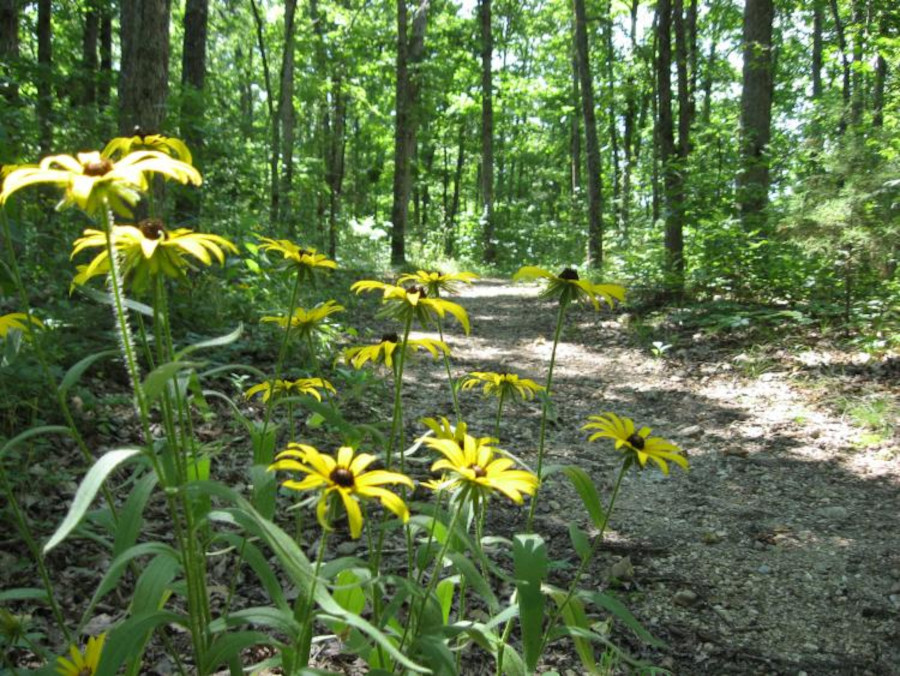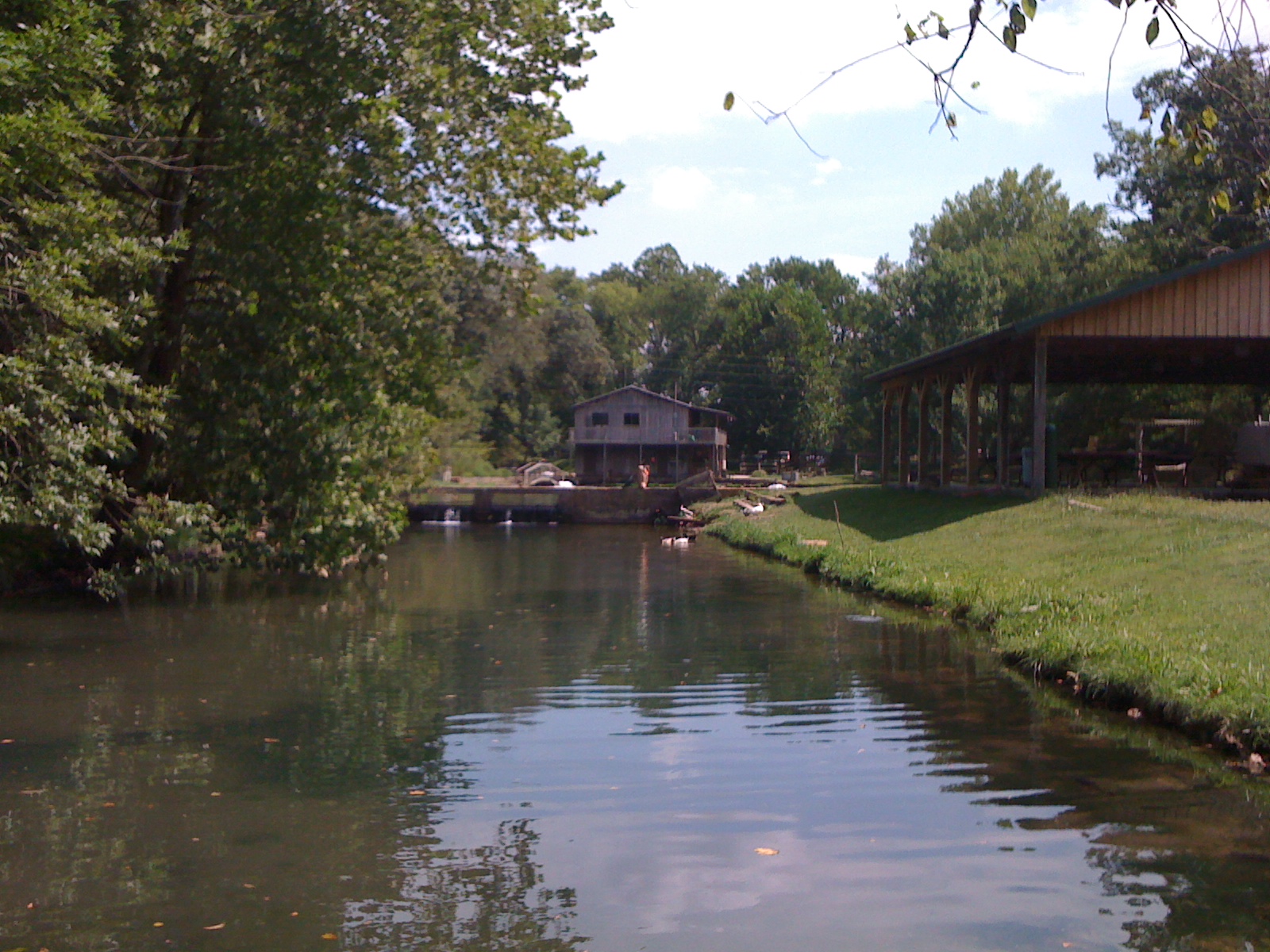The City of Highlandville
Located on an Ozark's Plateau a half hour drive from Bass Pro or a half hour drive from a Country Music Show in Branson Mo. Highlandville was settled in the middle to late 1800's which was a day's drive in a wagon from Springfield, Missouri.
Bill Pay
Announcing Online Bill Pay.
You may now create an online profile to expedite your payments!

Law Enforcement
If you have an Emergency Call 911
The City of Highlandville does not have a full time police department.
For NON Emergencies, you may call Highlandville City Hall during normal business hours: 417-443-2326
If you have received a Citation or a Summons please contact Christian County Circuit Clerk at
417-582-5150. All traffic fines for most cities are now handled through The Christian County Judicial Center at 110 W. Elm in Ozark, Mo.
Area Attractions

Busiek State Forest Wildlife Area
A well marked trail system provides approximately 18 miles of trails for use by hikers, bicyclists, and horseback riders. There is also camping and an unstaffed firearms shooting range. Visit here
Darla's Cakery
Darla’s Cakery provides specialty cakes made to order and whole pies made from scratch, for special occasions or just because. Visit Here


Greenhouse Two Rivers
Greenhouse Two Rivers is an amazing 7,000-square-foot glass greenhouse event center that sits on 20 acres of land. Perfect for Weddings and Special Events. Visit Here
Two Rivers Bike Park
Two Rivers Bike Park is a purpose-built, multi-use trail system, boasting over 14 miles of professionally built single track twisting through Ozarks terrain for mountain bikers, runners, and hikers to enjoy year round, free of charge. Visit Here


Mountain Springs Trout Park
Mountain Springs Trout Park is a spring fed area that is perfect for raising trout. The beauty of the Ozarks is seen all around you with the water, the trees, and the hilly terrain. Thousands of rainbow trout waiting for you to catch. Catch and Keep is using bait and barbed hooks. Visit Here
Curious About The Age Of Highlandville?
Click on the icon below to read the Christian County Headliner’s article “Highlandville to celebrate 25th anniversary in 2018.”
History of Highlandville
Perhaps if anyone could be termed the founder of Highlandville, Ferdinand Frank Kentling was that Person. Mr Kentling was a German immigrant who traveled to America in search of a better life. Also in search of a better life, an Austrian couple, William and Katie Heide came to Mexico with Maximilion when he became Emperor. William became bandmaster of the court of Maximilion and Katie was a lady in waiting to Empress Charlotte, daughter of King Leopold I of Belgium.
Maximilion was executed in 1867 and the Heide’s fled Mexico and traveled north eventually to St. Louis, Missouri where William died from injuries he suffered in Mexico. After Williams death, Katie sought work to support herself and her newborn baby daughter. Frank Kentling met and married Katie and soon traveled to Southwest Missouri. It was there on Wilderness Road about a days wagon ride south of Springfield that Frank and Katie built a log cabin near a large shallow pond. In 1868 the Kentling’s built a trading post which the locals termed “Dutch Store” because of the fractured English of the Kentlings. The trading post was a welcomed site to wagon travelers migrating south, for trappers and cotton farmers in Arkansas transporting goods north to the trade and to the railroad center of Springfield. Frank chose the name Highlandville for his settlement and was appointed as its first postmaster. Perhaps the name was chosen for the location on a high plateau or from the high times that travelers enjoyed as they were entertained by Katie’s singing and dancing during their stopover. Later the Kentling’s built a larger home on the property where the U S Post Office is currently located.
Highlandville’s first school was built in 1874. At first it was only a one room, log cabin school. Then in 1890, a two story, two room building was built. Building additions continued though the years. The Highlandville High School building which presently exists was built with WPA funds in 1936. With state school reorganization, Highlandville became the areas elementary school. The last high school class to graduate at Highlandville High School was in 1950.
Settlers continued to inhabit the area in the early 1900’s. Other stores were built including a Bank, Doctor’s office, Saloon, Blacksmith’s shop and a Motel. Farmers tilled the land and raised animals. They would help each other in times of harvest. Collectively, they would have wheat and oat thrashing days, hog and chicken killings, lard and soap makings, preserving food and supplies for their growing families.
With the advent of motorized vehicles, Highlandville became the cross roads of US Highways 65 and 123(Later named 160). Paul Campbell, great grandson of Frank Kentling, operated a Texaco Service Station at that intersection. Travel through Highlandville increased as Table Rock Lake was built in 1958. In 1959, four brothers from the Mabe family in Highlandville opened a lake front Country Music Show in Branson called “The Baldknobbers”. In 1960 a new attraction opened called “Silver Dollar City” and area economics changed forever.
With the change of U S Highway 65 routing directly to Branson, just 3 Miles east of Highlandville, traffic patterns changed. Small area farms closed as their owners found they could survive easier working away from home. Like many small towns, merchants closed their doors, however, Highlandville continued to grow in population. In 1993, Highlandville was incorporated as a Missouri city. The 2010 census found the population to be 911. In 2016, the population was estimated to be 985, a far cry from the estimated 200 in the booming early 1900’s.
Reference: Christian Country, its’ first 100 Years
Reference: The Kentling’s of Highlandville, by Gene Geer, White River Valley Historical Quarterly, Vol 1, No. 5 1962

